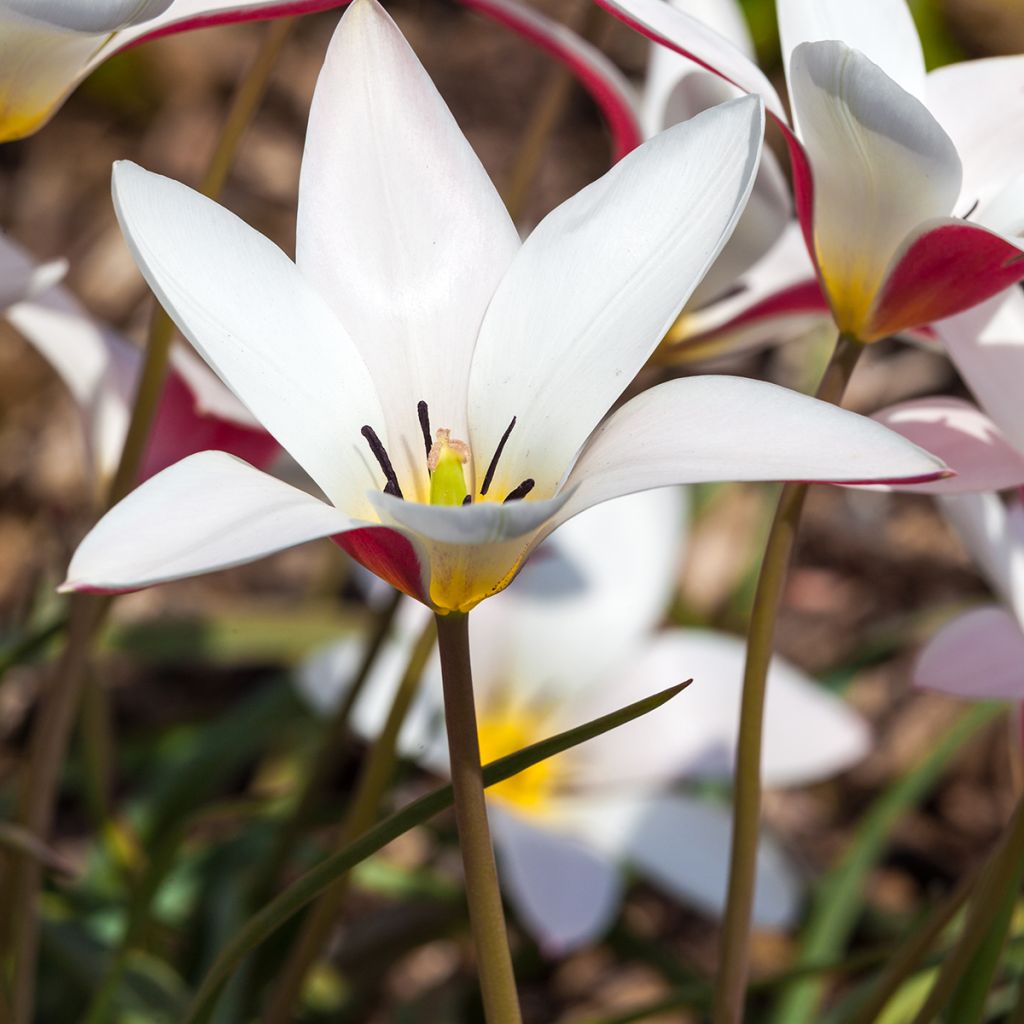

Tulipa clusiana Lady Jane
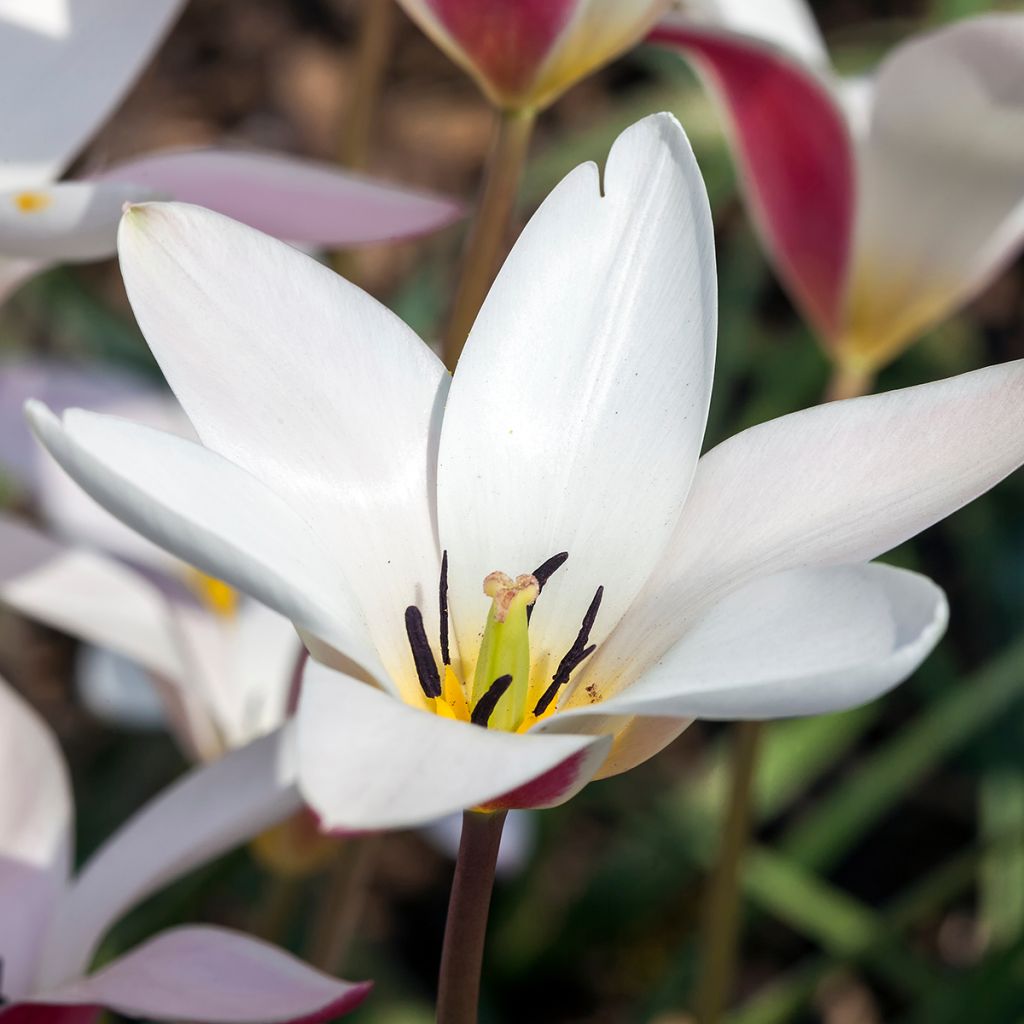

Tulipa clusiana Lady Jane
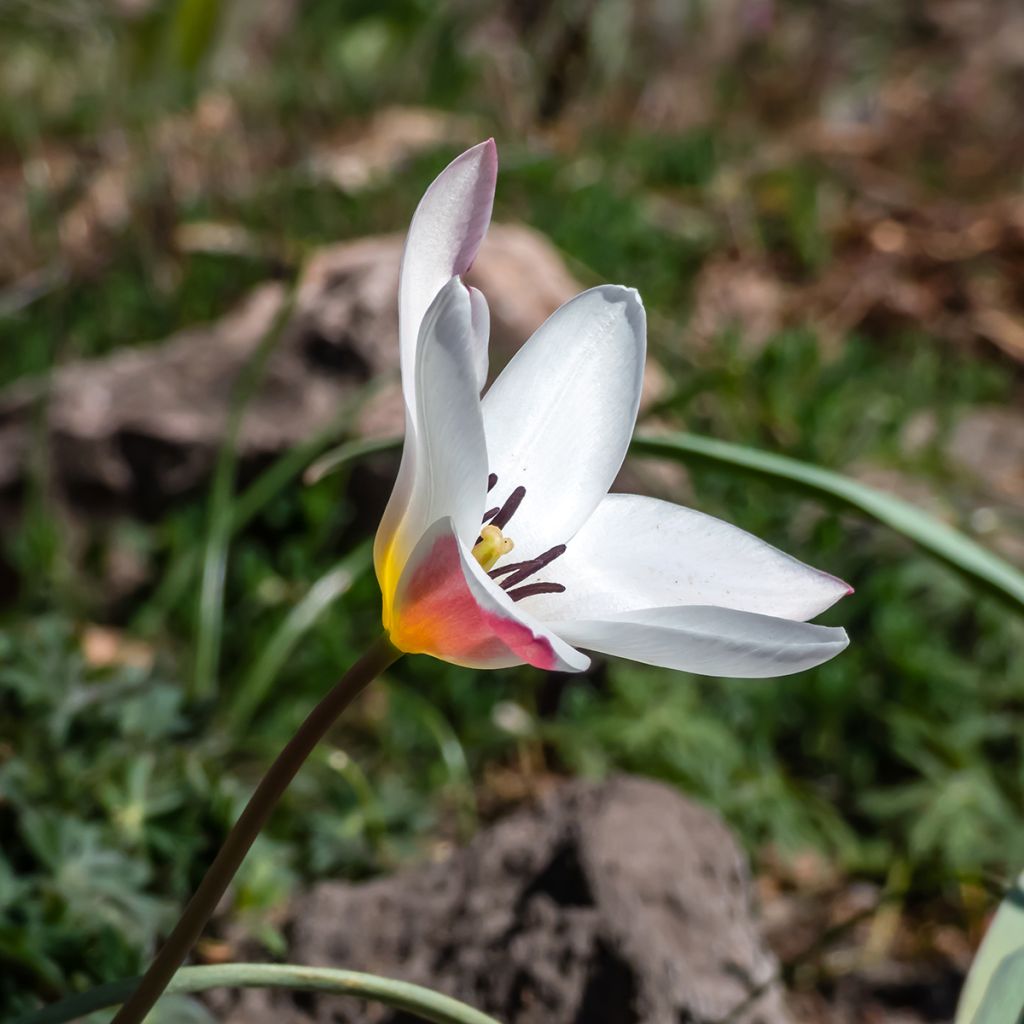

Tulipa clusiana Lady Jane
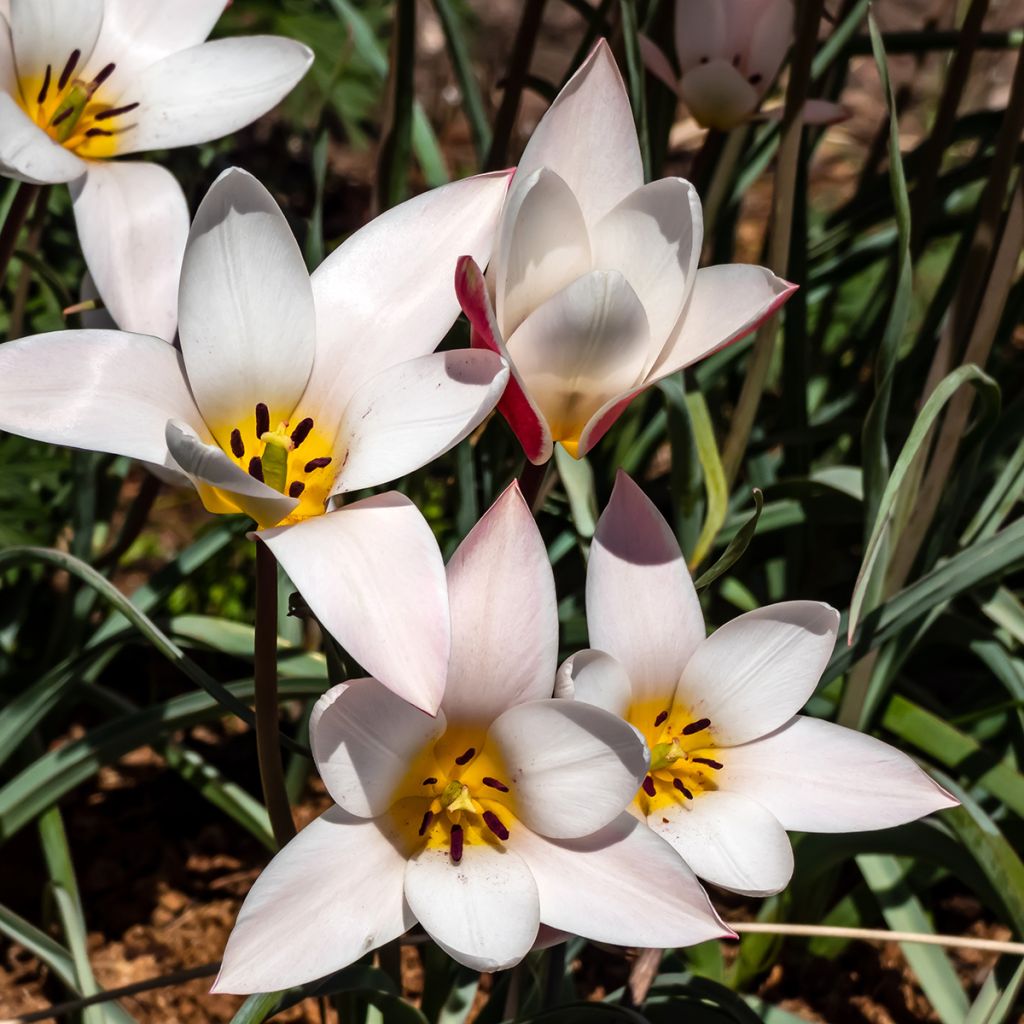

Tulipa clusiana Lady Jane
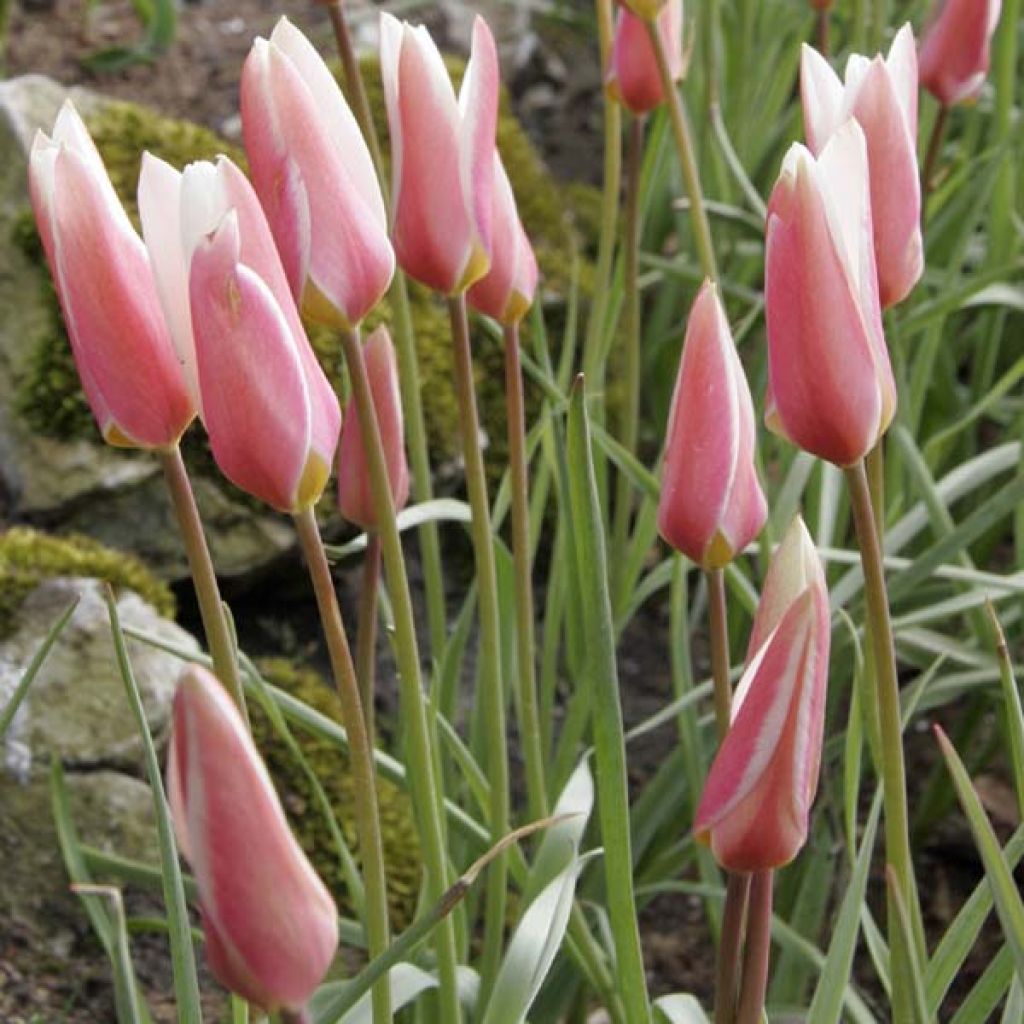

Tulipa clusiana Lady Jane
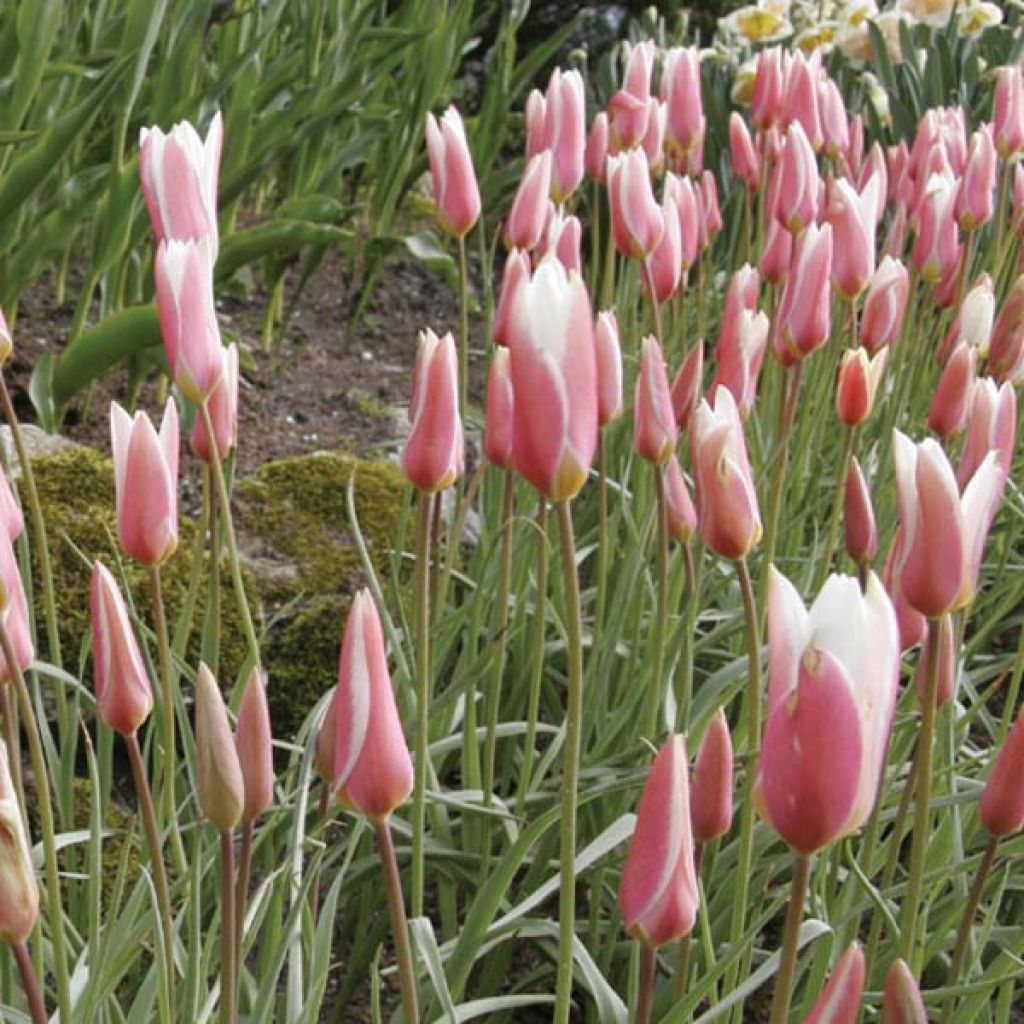

Tulipa clusiana Lady Jane
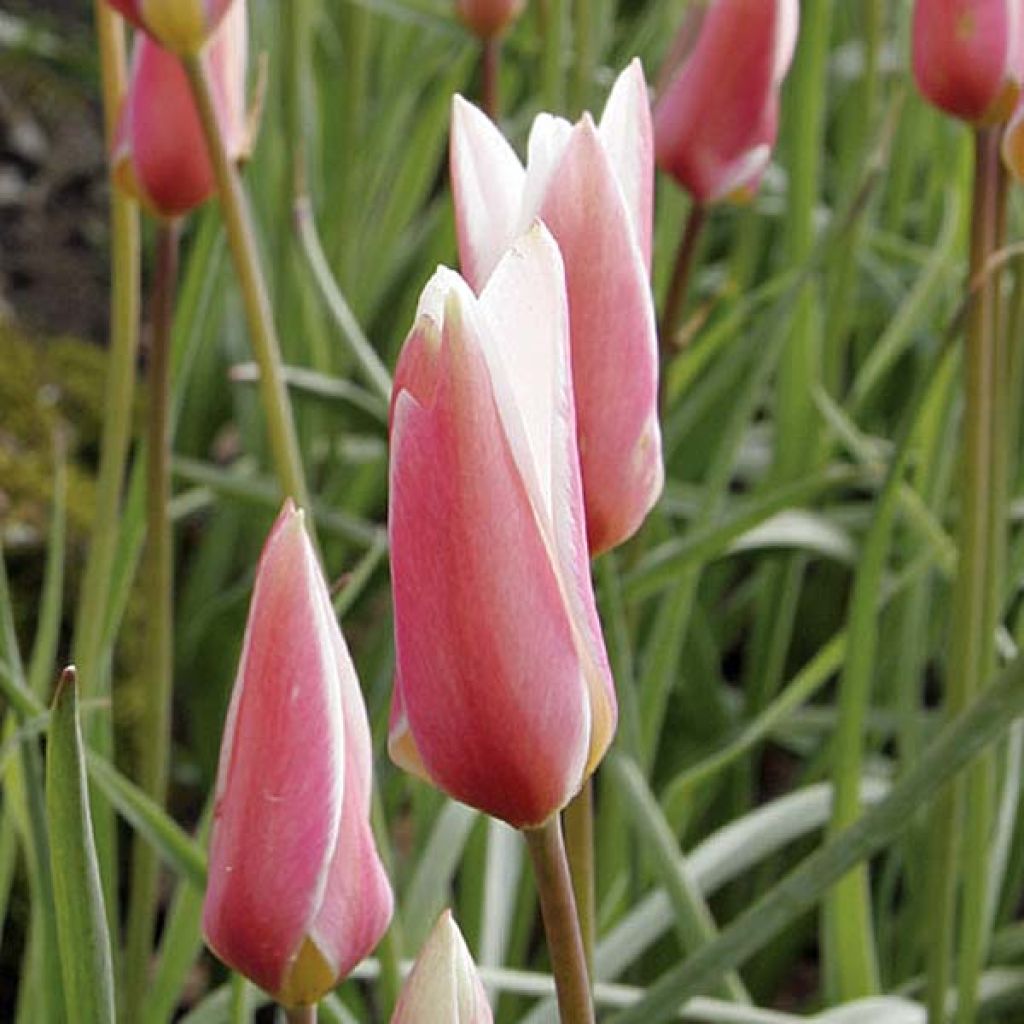

Tulipa clusiana Lady Jane
Tulipa clusiana Lady Jane
Tulipa clusiana Lady Jane
Lady Tulip, Candlestick Tulip
This plant carries a 6 months recovery warranty
More information
We guarantee the quality of our plants for a full growing cycle, and will replace at our expense any plant that fails to recover under normal climatic and planting conditions.
From €5.90 for pickup delivery and €6.90 for home delivery
Express home delivery from €8.90.

Does this plant fit my garden?
Set up your Plantfit profile →
Description
The Tulipa clusiana 'Lady Jane', directly derived from a botanical tulip, is an absolutely delightful selection. Its flower, when it appears, has a slender and tubular shape and a lovely bright pink and pale pink colours, with a touch of white. Perched on a tall and slender stem, it blooms in a star shape, revealing a beautiful surprise with its pure white interior and a small yellow centre that wonderfully reflects the light. It flowers in spring, a little earlier than other clusiana tulips, and shows excellent ability to multiply spontaneously. A wet spring and a dry summer are the keys to success for growing this light, sensual flower that has retained the charm of wild plants.
The Botanical Tulip clusiana 'Lady Jane' belongs to the lily family. The species Tulipa clusiana, also known as Lady Tulip, is native to southeastern Iran and the western Himalayas, and its base colour is white. It is one of the few species that naturalises and blooms in climates with mild winters, unaffected by frost. It has given rise to numerous cultivars, including 'Lady Jane', which is radiant and very feminine. This small tulip will not exceed 25 to 30 cm (10 to 12in) in height when in bloom. Its foliage is slightly grayish green, bluish, very narrow and linear. The flowers, larger than those of the species, appear in March-April, earlier or later depending on the climate. Tapered, somewhat resembling lily-flowered varieties, tinted with cherry pink and pale pink, they are infinitely elegant even when closed. They open widely in the sun, revealing the inside of a star that is predominantly white with a very pale pink, a yellow-centre and dark stamens. They close in the evening and when the sun hides.
Botanical tulips do not degenerate over time like large-flowered tulips. They naturalise and can remain in place for several years without any special maintenance and thrive in borders and rockeries, in well-drained, dry soil in summer. To create colorful scenes, they can be combined with various small bulb plants: Crocus, Allium moly, Ipheion uniflorum, Anemone blanda, small-flowered Narcissus, etc. These tulips are unmatched for bringing the colors of spring in pots or in sunny gardens.
There are various wild species in France, many of which are endangered. In cultivation, they are called botanical tulips, and one of the most common is the wild tulip (Tulipa sylvestris), which used to often grow sheltered by vines and whose subspecies australis is known as the southern tulip.
Report an error about the product description
Plant habit
Flowering
Foliage
Botanical data
Tulipa
clusiana
Lady Jane
Liliaceae
Lady Tulip, Candlestick Tulip
Cultivar or hybrid
Planting and care
Plant Tulipa clusiana 'Lady Jane' bulbs in the autumn, from September to December, at a depth of 5-10 cm (2-4in), spacing them 10 cm (4in) apart. The bulbs can remain in place for several years without division and multiply rapidly. They are much smaller than the large bulbs of recent hybrids. The planting should be done in ordinary soil, slightly acidic, neutral, or slightly alkaline, light, loose, well-worked, and above all well-draining, even sandy or loamy soil. Never add undecomposed manure or compost to the planting soil, as this could cause the bulbs to rot. The tulip will grow well in moist soil in spring and dry soil in summer. Plant it in a sunny or semi-shaded position in hot and sunny climates.
After flowering, their foliage becomes unsightly. We recommend planting Tiarella, Brunnera, Euphorbia Cyparissia, and Alchemilla in the foreground of your flower beds. Their foliage will enhance the colours of your tulips and during the summer season they will hide their yellowed leaves.
Planting period
Intended location
Care
-
, onOrder confirmed
Reply from on Promesse de fleurs
Haven't found what you were looking for?
Hardiness is the lowest winter temperature a plant can endure without suffering serious damage or even dying. However, hardiness is affected by location (a sheltered area, such as a patio), protection (winter cover) and soil type (hardiness is improved by well-drained soil).

Photo Sharing Terms & Conditions
In order to encourage gardeners to interact and share their experiences, Promesse de fleurs offers various media enabling content to be uploaded onto its Site - in particular via the ‘Photo sharing’ module.
The User agrees to refrain from:
- Posting any content that is illegal, prejudicial, insulting, racist, inciteful to hatred, revisionist, contrary to public decency, that infringes on privacy or on the privacy rights of third parties, in particular the publicity rights of persons and goods, intellectual property rights, or the right to privacy.
- Submitting content on behalf of a third party;
- Impersonate the identity of a third party and/or publish any personal information about a third party;
In general, the User undertakes to refrain from any unethical behaviour.
All Content (in particular text, comments, files, images, photos, videos, creative works, etc.), which may be subject to property or intellectual property rights, image or other private rights, shall remain the property of the User, subject to the limited rights granted by the terms of the licence granted by Promesse de fleurs as stated below. Users are at liberty to publish or not to publish such Content on the Site, notably via the ‘Photo Sharing’ facility, and accept that this Content shall be made public and freely accessible, notably on the Internet.
Users further acknowledge, undertake to have ,and guarantee that they hold all necessary rights and permissions to publish such material on the Site, in particular with regard to the legislation in force pertaining to any privacy, property, intellectual property, image, or contractual rights, or rights of any other nature. By publishing such Content on the Site, Users acknowledge accepting full liability as publishers of the Content within the meaning of the law, and grant Promesse de fleurs, free of charge, an inclusive, worldwide licence for the said Content for the entire duration of its publication, including all reproduction, representation, up/downloading, displaying, performing, transmission, and storage rights.
Users also grant permission for their name to be linked to the Content and accept that this link may not always be made available.
By engaging in posting material, Users consent to their Content becoming automatically accessible on the Internet, in particular on other sites and/or blogs and/or web pages of the Promesse de fleurs site, including in particular social pages and the Promesse de fleurs catalogue.
Users may secure the removal of entrusted content free of charge by issuing a simple request via our contact form.
The flowering period indicated on our website applies to countries and regions located in USDA zone 8 (France, the United Kingdom, Ireland, the Netherlands, etc.)
It will vary according to where you live:
- In zones 9 to 10 (Italy, Spain, Greece, etc.), flowering will occur about 2 to 4 weeks earlier.
- In zones 6 to 7 (Germany, Poland, Slovenia, and lower mountainous regions), flowering will be delayed by 2 to 3 weeks.
- In zone 5 (Central Europe, Scandinavia), blooming will be delayed by 3 to 5 weeks.
In temperate climates, pruning of spring-flowering shrubs (forsythia, spireas, etc.) should be done just after flowering.
Pruning of summer-flowering shrubs (Indian Lilac, Perovskia, etc.) can be done in winter or spring.
In cold regions as well as with frost-sensitive plants, avoid pruning too early when severe frosts may still occur.
The planting period indicated on our website applies to countries and regions located in USDA zone 8 (France, United Kingdom, Ireland, Netherlands).
It will vary according to where you live:
- In Mediterranean zones (Marseille, Madrid, Milan, etc.), autumn and winter are the best planting periods.
- In continental zones (Strasbourg, Munich, Vienna, etc.), delay planting by 2 to 3 weeks in spring and bring it forward by 2 to 4 weeks in autumn.
- In mountainous regions (the Alps, Pyrenees, Carpathians, etc.), it is best to plant in late spring (May-June) or late summer (August-September).
The harvesting period indicated on our website applies to countries and regions in USDA zone 8 (France, England, Ireland, the Netherlands).
In colder areas (Scandinavia, Poland, Austria...) fruit and vegetable harvests are likely to be delayed by 3-4 weeks.
In warmer areas (Italy, Spain, Greece, etc.), harvesting will probably take place earlier, depending on weather conditions.
The sowing periods indicated on our website apply to countries and regions within USDA Zone 8 (France, UK, Ireland, Netherlands).
In colder areas (Scandinavia, Poland, Austria...), delay any outdoor sowing by 3-4 weeks, or sow under glass.
In warmer climes (Italy, Spain, Greece, etc.), bring outdoor sowing forward by a few weeks.


































